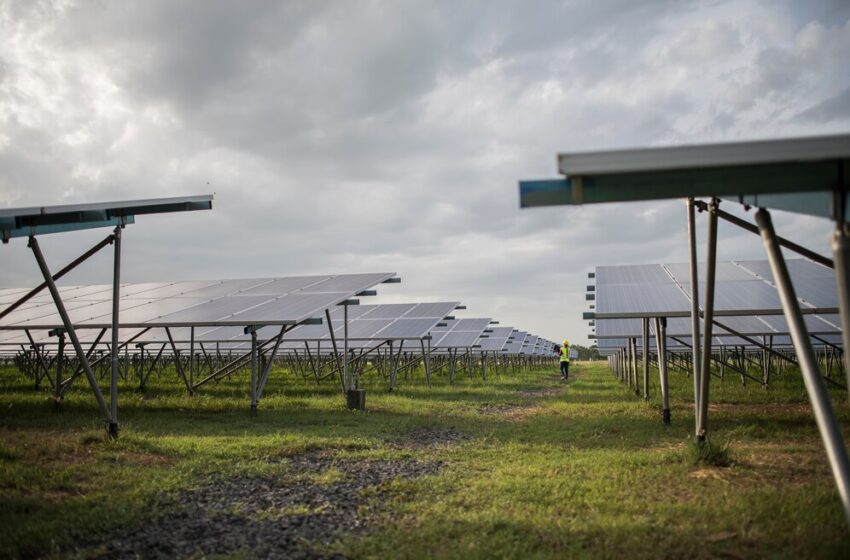
Innovations in Solar Energy Storage and Its Market Growth
The solar energy industry has witnessed a remarkable transformation over the past few years, not just in the efficiency of solar panels but also in the critical area of energy storage. Innovations in solar energy storage are enabling more efficient use of solar power, making it a more viable and reliable energy source. This blog explores the latest advancements in solar energy storage technologies and their impact on market growth.
The Importance of Energy Storage in Solar Power
Energy storage plays a pivotal role in the solar energy sector by addressing one of its most significant challenges: the intermittent nature of solar power. Storage solutions allow for the accumulation of excess energy produced during peak sunlight hours for use during periods of low sunlight or at night, enhancing the reliability and flexibility of solar energy.
Key Benefits:
- Enhanced Energy Reliability: Storage solutions ensure a continuous energy supply, regardless of weather conditions.
- Increased Grid Stability: Energy storage can help stabilize the grid, reducing the risk of outages and fluctuations in energy supply.
- Greater Energy Independence: With efficient storage, users can rely less on the grid, leading to increased energy independence.
Leading Innovations in Solar Energy Storage
Recent technological advancements are setting new benchmarks for how solar energy is stored and utilized, promising a brighter future for renewable energy adoption.
Lithium-Ion Batteries
- High Energy Density: Lithium-ion batteries offer a high energy density, making them ideal for both residential and commercial solar systems.
- Decreasing Costs: The cost of lithium-ion batteries has been declining steadily, making solar storage more accessible.
Flow Batteries
- Longer Lifespan: Flow batteries excel in terms of lifespan, capable of more charge and discharge cycles than lithium-ion batteries.
- Scalability: Their capacity can be easily increased by adding more electrolyte liquid, making them suitable for large-scale energy storage.
Solid-State Batteries
- Enhanced Safety: Solid-state batteries use a solid electrolyte, which is less prone to leaking and fire risks compared to liquid electrolytes.
- Higher Efficiency: These batteries potentially offer higher energy density and longer lifespans.
Thermal Energy Storage
- Utilizing Heat: This innovative approach stores excess solar energy in the form of heat, using materials like molten salt, which can retain heat for extended periods.
- Cost-Effectiveness: Thermal storage systems can be more cost-effective for large-scale energy storage, particularly in solar thermal power plants.
Market Growth and Future Prospects
The solar energy storage market is experiencing rapid growth, fueled by technological innovations and increasing demand for renewable energy sources.
Growth Drivers:
- Falling Costs: The declining cost of solar panels and storage technologies is making solar energy more competitive with traditional energy sources.
- Government Policies and Incentives: Many governments worldwide are offering incentives for solar energy adoption, further stimulating market growth.
- Growing Environmental Awareness: Rising awareness of environmental issues is driving demand for clean and sustainable energy solutions.
Future Trends:
- Integration with Smart Grids: The future will likely see greater integration of solar storage systems with smart grids, allowing for more efficient energy distribution and management.
- Advancements in Battery Technology: Ongoing research and development in battery technology promise even more efficient and cost-effective storage solutions.
- Expansion in Emerging Markets: As technology becomes more affordable, emerging markets will play a significant role in the global expansion of solar energy storage.
Challenges to Overcome
Despite the optimistic outlook, there are challenges that the industry must address to sustain growth and maximize the potential of solar energy storage.
Technical Challenges:
- Storage Capacity: Increasing the storage capacity of batteries without significantly raising costs remains a challenge.
- Durability and Maintenance: Enhancing the durability of storage systems and reducing maintenance requirements are crucial for long-term viability.
Regulatory and Infrastructure Challenges:
- Regulatory Hurdles: Navigating the complex regulatory landscape can be challenging for solar energy storage projects.
- Infrastructure Integration: Integrating solar storage solutions into existing energy infrastructures requires careful planning and investment.
Conclusion
Innovations in solar energy storage are revolutionizing the way we harness and utilize solar power, driving market growth and paving the way for a more sustainable energy future. As technology continues to advance, the potential for solar energy to significantly contribute to global energy needs is immense. However, addressing the existing challenges and continuing to innovate in storage solutions will be key to unlocking the full potential of solar energy. With ongoing investment in research and development, the future of solar energy storage looks bright, promising a cleaner, more sustainable world.










